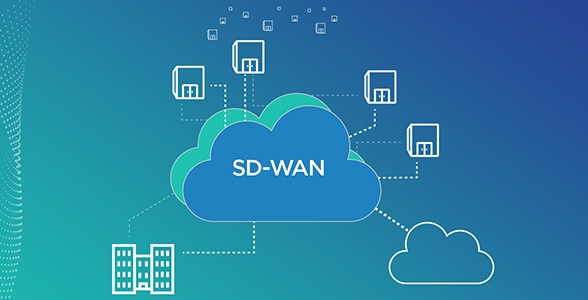
What are the Best SD-WAN solutions? It is a software-defined approach for managing the wide area network. Businesses need a fast, secure network to meet growing customer demands for cloud apps and services.
However, managing a complex network requires expertise that can be difficult to find and keep on staff. SD-WAN solutions reduce IT burden by simplifying WAN infrastructure, using low-cost internet connections, and automating monitoring.
It also offers centralized management to optimize application performance and resiliency. In this article, we will delve deeper into SD-WAN solutions, how it works, and what are its advantages.
SD-WAN Scalability
The business world can be volatile, so WAN solutions need the flexibility to scale. That’s one of the primary reasons many companies are moving away from MPLS. Furthermore, they adopt SD-WAN for their WAN connectivity needs.
Unlike traditional VPNs, which route all traffic over the network connection. This technology uses a segmented approach that prioritizes mission-critical applications.
This way, employees can continue working even when the network experiences a disruption. In addition, the best SD-WAN solutions offer centralized control and intelligent path management.
This means that networks can interchangeably use multiple WAN connections. Moreover, including MPLS, broadband Internet, and LTE or 5G.
In addition, it improves bandwidth efficiency by selecting the best available paths. The result is better performance for the company’s critical applications. This is crucial for businesses seeking to reduce operating costs and increase IT productivity.
Additionally, when a service provider, zero-touch deployment and automated cloud-based management manage solutions. Orchestration helps reduce IT overhead. This frees up leaders to spend more time focused on their business.
SD-WAN Flexibility
The pace of digital transformation demands agile networks. Deliver the performance employees need to stay competitive. However, traditional network architectures can’t keep up.
They are rigid and complex, with point solutions that require constant refreshes of HW appliances. Furthermore, it fails to offer flexibility or resiliency through multiple transport options.
SD-WAN lets you choose from many transport options to connect your business locations. This translates to savings on bandwidth and network costs, improved application performance, and resiliency.
It also lets you use the internet for higher-priority applications, freeing up more expensive MPLS connections for lower-priority traffic. Choosing the best path to send traffic to your data center is critical for application resiliency.
Traditional tunnel-based methods add overhead that consumes bandwidth and reduces application and session visibility. Furthermore, you can deploy a variety of links and leverage telemetry to select the most optimal route for each application.
Security
SD-WAN offers a way to achieve this with zero-touch deployment and centralized management through control plane software. It combines a simplified infrastructure with security capabilities for remote work environments.
By abstracting private line connectivity like MPLS into a software-controlled overlay network. Moreover, it is supported by physical broadband, wireless, and MPLS networks.
WAN allows branch offices to direct traffic to the cloud and internet directly from the WAN link, bypassing hub data centers for better performance. In addition to delivering faster, more reliable application performance, SD solutions support various transport options.
Help reduce costs through bandwidth optimization and quality of service controls. They also support dynamic routing based on application-aware policies pushed from a central server, simplifying the network for IT.
In addition, it is more responsive to changes in business requirements. This helps IT avoid human error that can compromise application performance and availability.
Automation
Getting new technology deployed across the enterprise can be time-consuming. It’s even more difficult when the technology needs to be managed on top of your existing IT network.
Working with a managed service provider can ease the burden on your IT team while optimizing ROI and reducing risk. With SD-WAN, the network becomes software-defined, and applications can be routed securely to the cloud.
This allows the WAN to utilize multiple connection types, improving bandwidth efficiency and performance. It can also prioritize traffic and provide sub-second failover to ensure critical business services are never interrupted.
SD solutions enable zero-touch provisioning to automate device configuration and policy deployment. It can also help with security, providing visibility into the network and enabling a solid defensive posture.
It can also leverage a single central controller to manage thousands of routers simultaneously. Consequently, it reduces deployment times and IT management costs. This solution also delivers path intelligence to identify the best routes for WAN traffic.
Cost
It cuts costs using a single, centralized controller to manage network devices. IT teams can configure WAN branch routers to optimize application performance and backhaul traffic over low-cost transport services.
However, instead of relying on expensive MPLS private circuits. SD-WAN can instantly prioritize data over multiple paths. Consequently, it ensures your business can always connect to Cloud and SaaS applications without interruption.
With this WAN optimization, you can avoid costly circuit outages and minimize the impact on employee productivity, customer satisfaction, and business revenue.
WAN solutions provide direct Internet access to central Cloud resources for businesses with remote locations without sending the data via the hub. This means lower latency and jitter for the end user and eliminates the cost of costly MPLS connections.
Plus, IT managers can save on hardware and deployment costs by eliminating the need for dedicated WAN edge devices like firewalls and NATs. For many distributed organizations, this can significantly save equipment and IT personnel.
FAQ’s
Which is the best SD-WAN solution?
Here are the top 10 solutions:
- Cisco Meraki.
- FortiGate.
- Cradlepoint.
- VPN Gateway virtual appliance.
- Symantec SSL Visibility.
- Cato SASE Cloud.
- Aruba EdgeConnect.
- Aryaka Networks.
- Silver Peak (Now part of HPE).
- VMware by VeloCloud.
What is an example of a WAN solution?
Dropbox and Microsoft 365 are the best examples.
What problems are solved?
- Ensuring the quality of network connections is a key function of SD wan, as it automatically directs network traffic through the most advantageous routes.
- It is designed around the concept of underlay and overlay networks, but it can face challenges related to these network layers.
- Managing multiple carriers is a common aspect of WAN deployment.
What are the 4 main components of the enhanced SD solution?
Orchestration plane, Management Plane, Control Plane, and Data Plane.
For more information, visit cosmosmagazines.com






